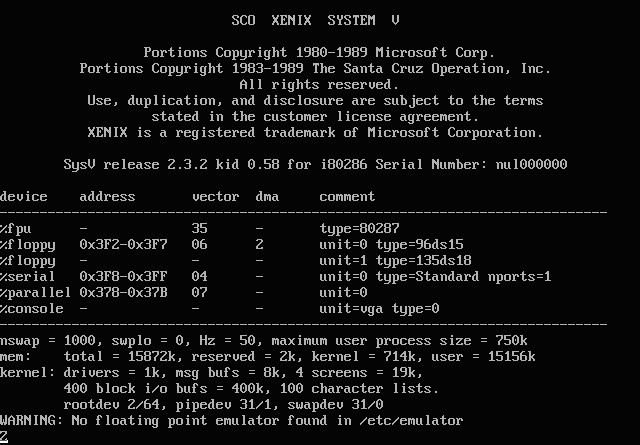
FreeBSD details »
FreeBSD is a free and open-source Unix-like operating system descended from the Berkeley Software Distribution (BSD), which was based on Research Unix.
FreeBSD has similarities with Linux, with two major differences in scope and licensing: FreeBSD maintains a complete system, i.e. the project delivers a kernel, device drivers, userland utilities, and documentation, as opposed to Linux only delivering a kernel and drivers, and relying on third-parties for system software;[5] and FreeBSD source code is generally released under a permissive BSD license, as opposed to the copyleft GPL used by Linux.
Source: Wikipedia.
Log in with user:password or root:password.
Create
« details Windows 7
Windows 7 (codenamed Vienna, formerly Blackcomb) is a personal computer operating system developed by Microsoft.
Windows 7 was primarily intended to be an incremental upgrade to the operating system, intending to address Windows Vista's critical reception (such as performance improvements), while maintaining hardware and software compatibility. Windows 7 continued improvements on Windows Aero (the user interface introduced in Windows Vista) with the addition of a redesigned taskbar that allows applications to be "pinned" to it, and new window management features. Other new features were added to the operating system, including libraries, the new file sharing system HomeGroup, and support for multitouch input. A new "Action Center" interface was also added to provide an overview of system security and maintenance information, and tweaks were made to the User Account Control system to make it less intrusive. Windows 7 also shipped with updated versions of several stock applications, including Internet Explorer 8, Windows Media Player, and Windows Media Center.
In contrast to Windows Vista, Windows 7 was generally praised by critics, who considered the operating system to be a major improvement over its predecessor due to its increased performance, its more intuitive interface (with particular praise devoted to the new taskbar), fewer User Account Control popups, and other improvements made across the platform. Windows 7 was a major success for Microsoft; even prior to its official release, pre-order sales for 7 on the online retailer Amazon.com had surpassed the previous records. In just six months, over 100 million copies had been sold worldwide, increasing to over 630 million licenses by July 2012, and a market share of 56.53% of "desktop operating systems" as of September 2015 according to Net Applications, making it the most widely used version of Windows.
Source: Wikipedia.
Create
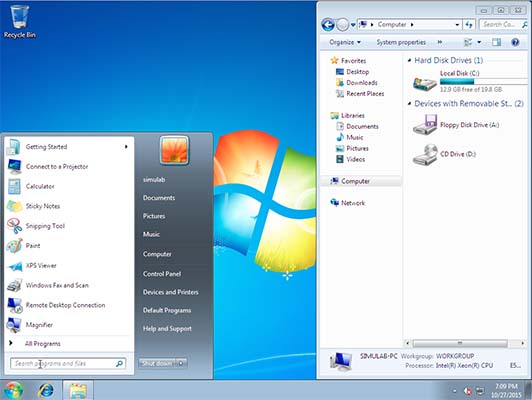

Windows XP details »
Windows XP (codenamed Whistler) is a personal computer operating system that was produced by Microsoft as part of the Windows NT family of operating systems.
Development of Windows XP began in the late 1990s as "Neptune", an operating system built on the Windows NT kernel which was intended specifically for mainstream consumer use—an updated version of Windows 2000 was also originally planned for the business market. However, in January 2000, both projects were shelved in favor of a single OS codenamed "Whistler", which would serve as a single OS platform for both consumer and business markets. Windows XP was a major advance from the MS-DOS based versions of Windows in security, stability and efficiency due to its use of Windows NT underpinnings. It introduced a significantly redesigned graphical user interface and was the first version of Windows to use product activation in an effort to reduce its copyright infringement.
Upon its release Windows XP received generally positive reviews, with critics noting increased performance (especially in comparison to Windows ME), a more intuitive user interface, improved hardware support, and its expanded multimedia capabilities. Despite some initial concerns over the new licensing model and product activation system, Windows XP eventually proved to be popular and widely used. It is estimated that at least 400 million copies of Windows XP were sold globally within its first five years of availability, and at least one billion copies were sold by April 2014.
Windows XP remained popular even after the release of newer versions, particularly due to the poorly received release of its successor Windows Vista. Vista's 2009 successor, Windows 7, only overtook XP in total market share at the end of 2011.
Sales of Windows XP licenses to original equipment manufacturers (OEMs) ceased on June 30, 2008, but continued for netbooks until October 2010. Extended support for Windows XP ended on April 8, 2014, after which the operating system ceased receiving further support or security updates to most users. As of September 2015, Windows XP market share is 12.21% (and higher market share in China, at 30%, India; Asia in general and Africa), making it the second most popular version of Windows after Windows 7 (other statistics rank it third after Windows 8.1).
Source: Wikipedia.
Create
« details Ubuntu 14.04
Ubuntu is a Debian-based Linux operating system and distribution, with Unity as its default desktop environment for personal computers including smartphones in later versions.
Development of Ubuntu is led by UK-based Canonical Ltd., a company owned by South African entrepreneur Mark Shuttleworth. Canonical generates revenue through the sale of technical support and other services related to Ubuntu. The Ubuntu project is publicly committed to the principles of open-source software development; people are encouraged to use free software, study how it works, improve upon it, and distribute it.
Source: Wikipedia.
If on ssh, log in as user "user" with password "password".
Create
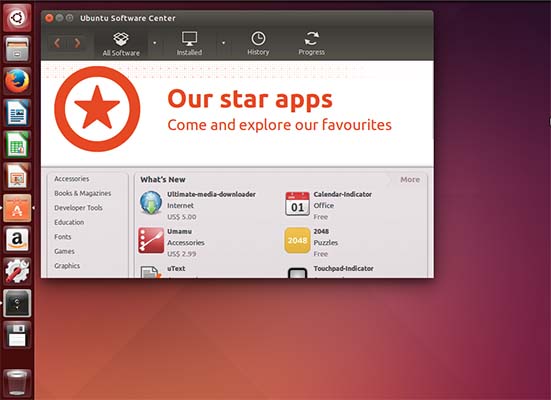

Minix 3 details »
MINIX 3 is a project to create a small, highly reliable, and functional Unix-like operating system.
The main goal of the project is for the system to be fault-tolerant by detecting and repairing its own faults on the fly, without user intervention. The main uses of the operating system are envisaged to be embedded systems and education.
MINIX 3 currently supports IA-32 architecture PC-compatible systems. It is also possible to run MINIX under emulators or virtual machines, such as Bochs, VMware Workstation, Microsoft Virtual PC, Oracle VirtualBox, and QEMU. Ports to the ARM and PowerPC architectures are in development.
The distribution comes on a live CD and also can be downloaded as a USB stick image.
Source: Wikipedia.
Log in with user:password or root:password.
Create
« details Windows 95
Windows 95 (codenamed Chicago) is a consumer-oriented operating system developed by Microsoft.
Windows 95 merged Microsoft's formerly separate MS-DOS and Windows products. It featured significant improvements over its predecessor, Windows 3.1, most notably in the graphical user interface (GUI) and in its simplified "plug-n-play" features. There were also major changes made to the core components of the operating system, such as moving from a mainly co-operatively multitasked 16-bit architecture to a pre-emptively multitasked 32-bit architecture.
Accompanied by an extensive marketing campaign, Windows 95 was a major success in the marketplace at launch and shortly became the most popular desktop operating system. It also introduced numerous functions and features that were featured in later Windows versions, such as the taskbar, the 'Start' button, and the way the user navigates. It was also suggested that Windows 95 had an effect of driving other major players (including OS/2) out of business, something which would later be used in court against Microsoft.
Three years after its introduction, Windows 95 was succeeded by Windows 98. Microsoft ended support for Windows 95 on December 31, 2001.
Source: Wikipedia.
Create
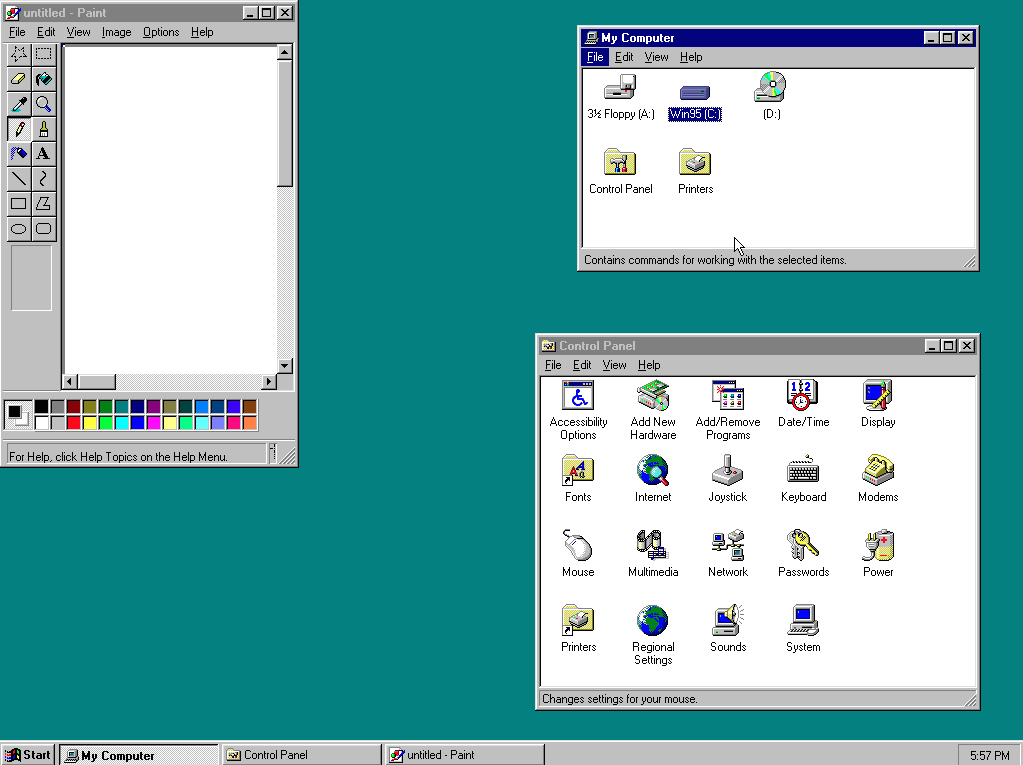

MS-DOS 6.22 & Windows 3.11 details »
Windows 3.1x (codenamed Janus) is a series of 16-bit operating systems produced by Microsoft for use on personal computers.
Windows 3.1 was originally released on April 6, 1992; official support for Windows 3.1 ended on December 31, 2001, and OEM licensing for Windows for Workgroups 3.11 on embedded systems continued to be available until November 1, 2008.
Source: Wikipedia.
Create
« details Windows 98
Windows 98 (codenamed Memphis while in development) is a graphical operating system by Microsoft.
Like its predecessor, Windows 98 is a hybrid 16-bit/32-bit monolithic product with an MS-DOS based boot stage. Windows 98 was succeeded by Windows 98 Second Edition on May 5, 1999, which in turn was succeeded by Windows ME on June 19, 2000. Microsoft ended mainstream support for Windows 98 and 98SE on June 30, 2002, and extended support ended on July 11, 2006.
The startup sound for Windows 98 was composed by Ken Kato, who considered it to be a "tough act to follow."
Source: Wikipedia
Login with username "Administrator" and password "password".
Create


OS/2 Warp 4 details »
OS/2 is a series of computer operating systems, initially created by Microsoft and IBM, then later developed by IBM exclusively.
OS/2 was intended as a protected mode successor of PC DOS. Notably, basic system calls were modeled after MS-DOS calls; their names even started with "Dos" and it was possible to create "Family Mode" applications: text mode applications that could work on both systems. Because of this heritage, OS/2 shares similarities with Unix, Xenix, and Windows NT in many ways.
OS/2 is no longer marketed by IBM, and IBM standard support for OS/2 was discontinued on 31 December 2006. It has been since maintained with relatively few new features under the name of eComStation.
Source: Wikipedia.
Create
« details Solaris 11.2
Solaris is a Unix operating system originally developed by Sun Microsystems.
Solaris is known for its scalability, especially on SPARC systems, and for originating many innovative features such as DTrace, ZFS and Time Slider. Solaris supports SPARC-based and x86-based workstations and servers from Oracle and other vendors, with efforts underway to port to additional platforms. Solaris is registered as compliant with the Single Unix Specification.
Historically, Solaris was developed as proprietary software. In June 2005, Sun Microsystems released most of the codebase under the CDDL license, and founded the OpenSolaris open source project. With OpenSolaris, Sun wanted to build a developer and user community around the software. After the acquisition of Sun Microsystems in January 2010, Oracle decided to discontinue the OpenSolaris distribution and the development model. Just ten days before the internal Oracle memo announcing this decision to employees was "leaked", Garrett D'Amore had announced the illumos project, creating a fork of the Solaris kernel.
In August 2010, Oracle discontinued providing public updates to the source code of the Solaris kernel, effectively turning Solaris 11 into a closed source proprietary operating system. However, through the Oracle Technology Network (OTN), industry partners can still gain access to the in-development Solaris source code. Source code for the open source components of Solaris 11 is available for download from Oracle.
Source: Wikipedia.
Log in with InstantLab:InstantLab1 or root:InstantLab1.
Create
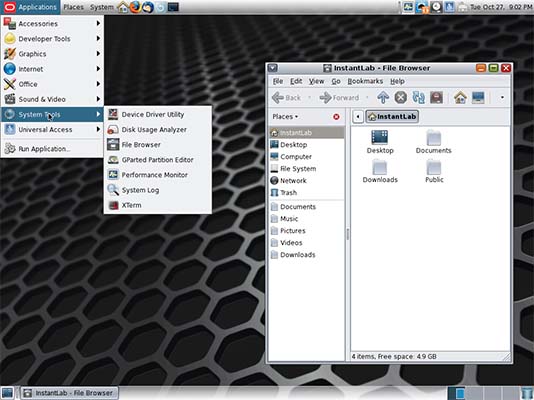

Plan 9 details »
Plan 9 from Bell Labs is a distributed operating system, originally developed by the Computing Sciences Research Center at Bell Labs between the mid-1980s and 2002.
In Plan 9, virtually all computing resources, including files, network connections, and peripheral devices, are represented through the file system rather than specialized interfaces. A unified network protocol called 9P ties a network of computers running Plan 9 together, allowing them to share all resources so represented.
The name Plan 9 from Bell Labs is a reference to the Ed Wood 1959 cult science fiction Z-movie Plan 9 from Outer Space. Also, Glenda, the Plan 9 Bunny, is presumably a reference to Wood's film Glen or Glenda. The system continues to be used and developed by operating system researchers and hobbyists.
Create
« details MacOS 9
Mac OS 9 is the ninth and final major release of Apple's Classic Mac OS operating system.
Introduced on October 23, 1999, Apple positioned it as "The Best Internet Operating System Ever", highlighting Sherlock 2's Internet search capabilities, integration with Apple's free online services known as iTools and improved Open Transport networking. While Mac OS 9 lacks protected memory and full pre-emptive multitasking, lasting improvements include the introduction of an automated Software Update engine and support for multiple users.
Apple discontinued development of Mac OS 9 in 2001, transitioning all future development to OS X. Since that time, no updates have been released. The final updates to Mac OS 9 addressed compatibility issues with OS X while running in the Classic Environment and compatibility with Carbon applications. At the 2002 World Wide Developers Conference, Steve Jobs began his keynote address by staging a mock funeral for OS 9.
Source: Wikipedia.
Create
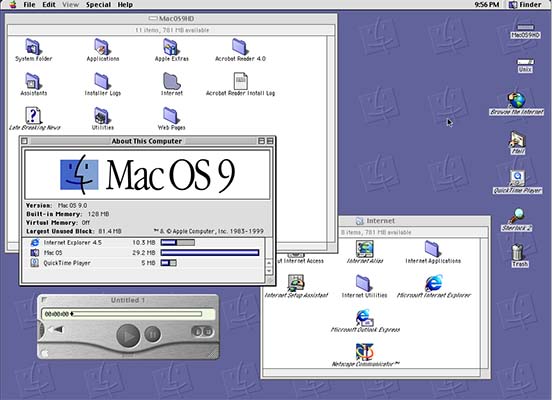
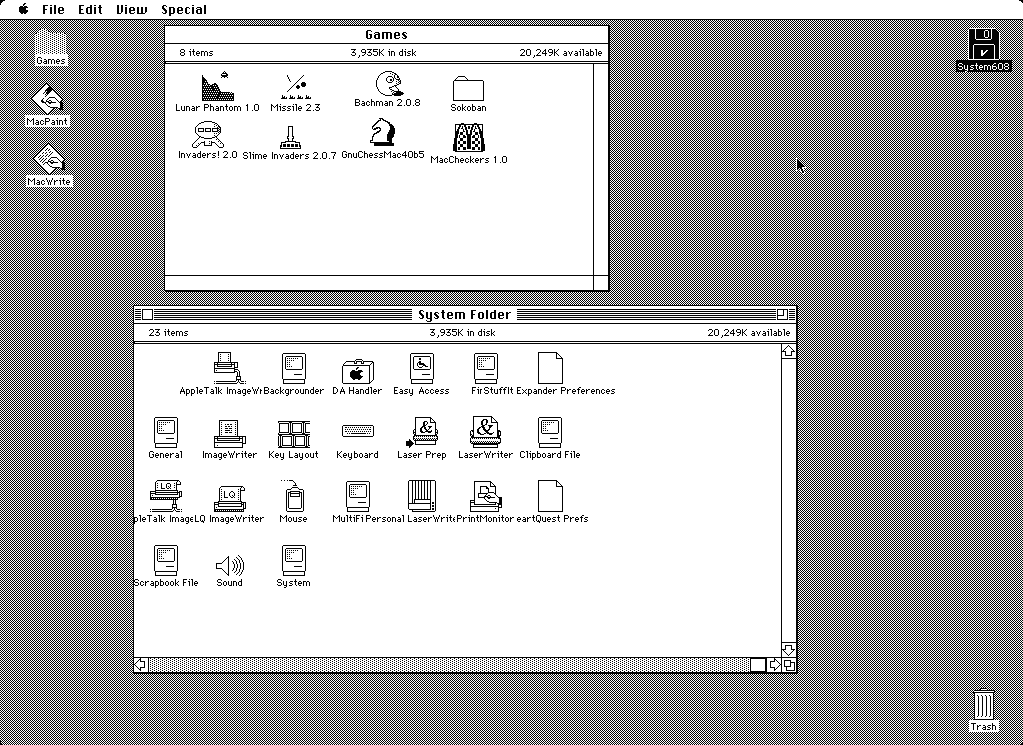
System 6 details »
System 6 (also referred to as System Software 6) is a graphical user interface-based operating system for Macintosh computers.
Source: Wikipedia.
Create
« details QNX Neutrino 6.3.2
QNX is a commercial Unix-like, real-time, and microkernel-based operating system, aimed primarily at the embedded systems market. The product was acquired by BlackBerry in 2010. QNX was one of the first commercially successful microkernel operating systems and is used in a variety of devices including cars and mobile phones. This machine includes the Photon GUI.
Source: Wikipedia.
Log in as root or by clicking Superuser.
Create

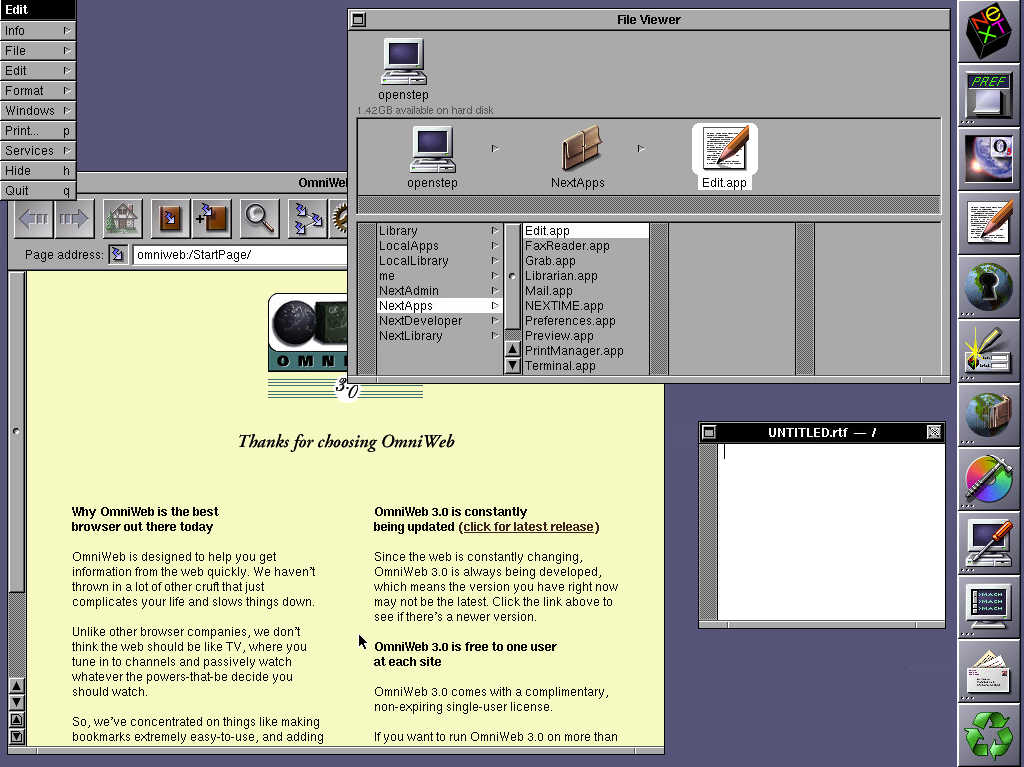
OpenStep 4.2 details »
OpenStep is a defunct object-oriented application programming interface (API) specification for a legacy object-oriented operating system, with the basic goal of offering a NeXTSTEP-like environment on non-NeXTSTEP operating systems.
Source: Wikipedia.
Create
« details Xenix
Xenix is a discontinued version of the Unix operating system for various microcomputer platforms, licensed by Microsoft from AT&T Corporation in the late 1970s. The Santa Cruz Operation (SCO) later acquired exclusive rights to the software, and eventually replaced it with SCO UNIX (now known as SCO OpenServer).
Source: Wikipedia.
Login with the username "root" and the password "root".
Create
